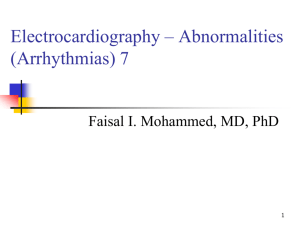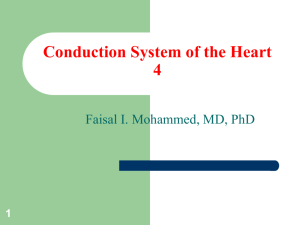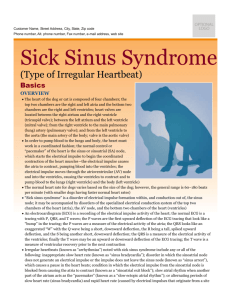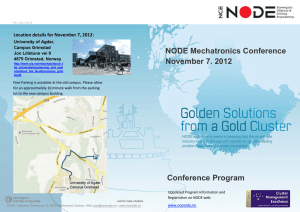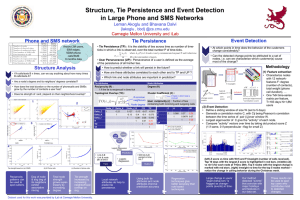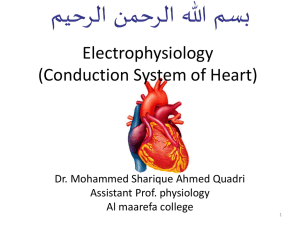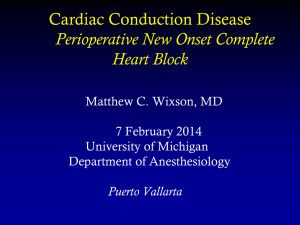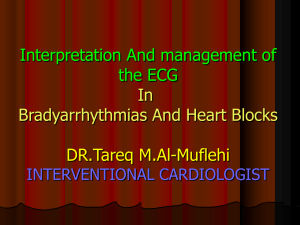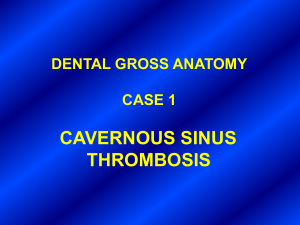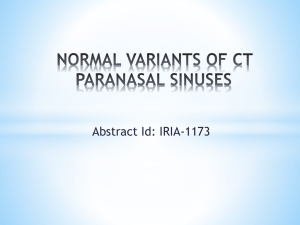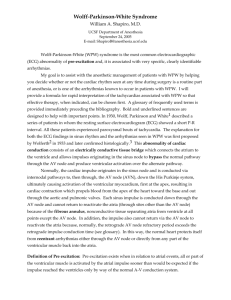Excitation of the Heart Lecture Slides
advertisement
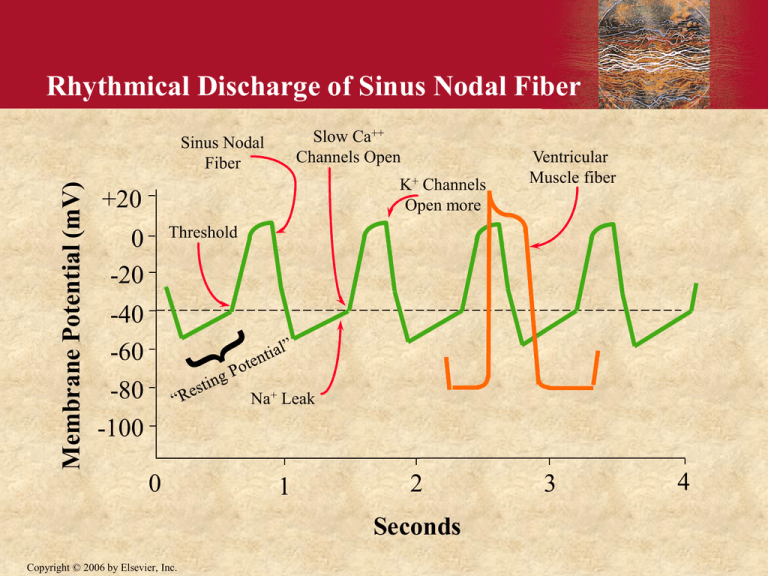
Rhythmical Discharge of Sinus Nodal Fiber Slow Ca++ Channels Open Membrane Potential (mV) Sinus Nodal Fiber K+ Channels Open more +20 Ventricular Muscle fiber Threshold 0 -20 -40 -60 -80 -100 Na+ Leak 0 1 2 Seconds Copyright © 2006 by Elsevier, Inc. 3 4 Time of Arrival of Cardiac Impulse SA Node H (0.19) (0.0) T (0.03) (0.12) Left Bundle Branch (0.19) AV Node (0.22) AV Bundle (0.21) (0.18) Right Bundle Branch (0.17) (0.18) Copyright © 2006 by Elsevier, Inc. Main Arrival Times S-A Node 0.00 sec A-V Node 0.03 sec A-V Bundle 0.12 sec Ventricular Septum 0.16 sec Sinus Node is Cardiac Pacemaker • Normal rate of discharge in sinus node is 7080/min.; A-V node - 40-60/min.; Purkinje fibers - 15-40/min. • Sinus node is pacemaker because of its faster discharge rate Copyright © 2006 by Elsevier, Inc. Ectopic Pacemaker • This is a portion of the heart with a more rapid discharge than the sinus node. • Also occurs when transmission from sinus node to A-V node is blocked (A-V block). Copyright © 2006 by Elsevier, Inc. Parasympathetic Effects on Heart Rate • Parasympathetic (vagal) nerves, which release acetylcholine at their endings, innervate S-A node and A-V junctional fibers proximal to A-V node. • Causes hyperpolarization because of increased K+ permeability in response to acetylcholine. • This causes decreased transmission of impulses maybe temporarily stopping heart rate. • Ventricular escape occurs. Copyright © 2006 by Elsevier, Inc. Sympathetic Effects on Heart Rate • • • • Releases norepinephrine at sympathetic ending Causes increased sinus node discharge Increases rate of conduction of impulse Increases force of contraction in atria and ventricles Copyright © 2006 by Elsevier, Inc.

